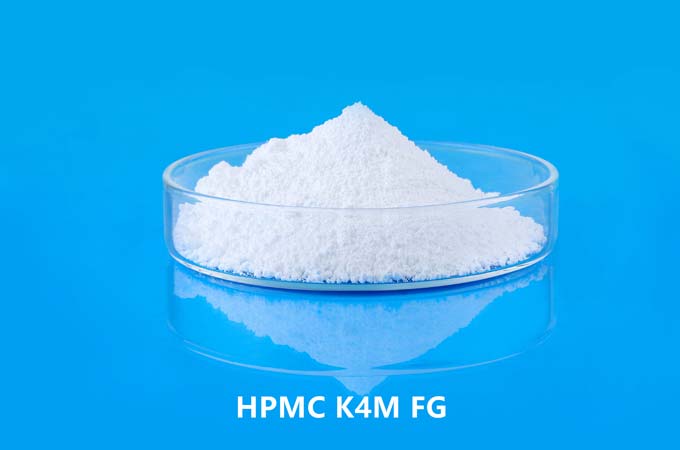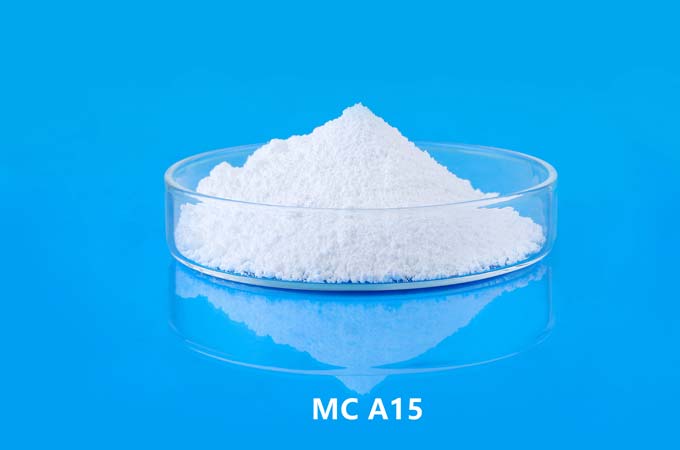The water retention enhancement effect of hydroxypropyl methylcellulose (HPMC) in industrial formulations is widely used in many industries, such as building materials, coatings, daily chemicals, and medicines. Its unique molecular structure and physicochemical properties make it excellent in water retention and can effectively improve the performance of the formulation.
1. Molecular structure and properties of HPMC
HPMC is a non-ionic cellulose ether made from natural cellulose by chemical modification. Its main characteristics are good water solubility, thickening, film-forming properties and high viscosity. HPMC contains a large number of hydroxyl and methyl groups in its structure, and hydrophilic groups (such as hydroxypropyl groups) are introduced into the molecular chain, which makes it easy to dissolve in water, forming a high-viscosity aqueous solution, and can form strong hydrogen bonds with water molecules in the solution.
In water, HPMC molecules interact with water molecules through their hydrophilic groups to form an aqueous solution with high viscoelasticity. The high flexibility of its structure can bind water molecules to a certain extent, thereby playing a role in water retention. By forming a network structure, HPMC can capture and retain a large amount of water in the liquid phase.
2. HPMC's water retention mechanism
The water retention of HPMC comes from its good water absorption and gel-forming ability. Specifically, its water retention mechanism can be analyzed from the following aspects:
Physical adsorption: The hydroxyl and methyl groups in the HPMC molecule can form hydrogen bonds with water molecules, and the water molecules are tightly "locked" near the molecular chain through physical adsorption. This adsorption ability enables HPMC to effectively reduce water loss and slow down the rate of water evaporation under dry or high temperature conditions.
Colloid properties: When HPMC is dissolved in water, it forms a colloidal solution with a certain viscosity. The colloid can effectively wrap water molecules and form a "protective barrier" for water to prevent its rapid loss. This colloidal property is particularly suitable for industrial formulas that need to retain water, extending the retention time of water in the formula.
Film-forming property: After the water evaporates, HPMC can form a dense film. This film also prevents the water from evaporating too quickly to a certain extent, and plays a role in moisturizing and prolonging the water retention time. In some coating or adhesive formulas, this film-forming property is particularly important.
3. Application in various industries
HPMC has been widely used in many industries due to its excellent water retention performance. The following are examples of its application in major industrial fields:
3.1 Building materials industry
In the field of building materials, HPMC is widely used in dry mortar, tile adhesive, plaster mortar and gypsum products. HPMC can effectively improve construction performance and extend operability by improving the water retention of materials.
Dry mortar: HPMC can increase water retention in dry mortar and prevent water from being quickly absorbed by the base layer, thereby ensuring the strength and adhesion of the mortar. This is especially important for large-scale construction, which helps to improve construction efficiency and reduce the occurrence of cracks.
Tile adhesive: HPMC can maintain moisture in tile adhesive, ensure sufficient hydration reaction of the adhesive, improve adhesion and construction operability.
3.2 Paint industry
HPMC is used as a thickener and stabilizer in water-based paints. Its water retention effect can significantly improve the coating and uniformity of the paint.
Water retention and rheological regulation: In coatings, HPMC ensures uniform coating by regulating the rheological properties and viscosity of the coating. At the same time, its water retention property prevents the rapid volatilization of water during the coating process, thereby reducing the cracking and unevenness of the coating.
3.3 Daily chemical industry
In daily chemical products such as facial cleansers, shampoos and lotions, HPMC is widely used for its thickening and moisturizing properties. HPMC can improve the stability of water in the formula and prolong the moisturizing time.
Moisturizing: In cosmetics and personal care products, HPMC can firmly bind water through its hydrophilic groups to form a moisturizing film, effectively preventing the evaporation of water and maintaining the moisture of the skin.
3.4 Pharmaceutical industry
HPMC is used as an excipient for tablets and a coating material for capsules in pharmaceutical preparations. Its water retention is mainly reflected in the extended release time of drugs in drugs.
Sustained-release dosage form: HPMC, as a sustained-release agent in tablets, can control the dissolution and release rate of drugs in the gastrointestinal tract through its film-forming and water-retaining properties, thereby achieving long-term release of drugs.
4. HPMC regulatory factors
The water retention of HPMC depends not only on its own molecular structure, but also on external conditions. Temperature, humidity, HPMC concentration and its compatibility with other additives have a significant impact on its water retention performance. By regulating these factors, the water retention effect of HPMC can be further optimized.
Temperature influence: High temperature will accelerate the evaporation of water, but HPMC can still maintain a certain water absorption and colloidal properties at higher temperatures, so it can still play a good role in water retention under high-temperature construction environment.
Concentration adjustment: The higher the concentration of HPMC, the greater the viscosity of the solution, and its water retention capacity will also increase accordingly. However, too high viscosity may affect the construction performance, so it is necessary to find a balance between viscosity and water retention.
As a water-soluble polymer material with superior performance, HPMC can significantly improve the water retention of industrial formulations through its water absorption, colloidal properties and film-forming properties. This water retention effect has important application value in the fields of building materials, coatings, daily chemicals, and medicine. By adjusting the concentration, molecular weight, and other ingredients in the formula of HPMC, its water retention effect can be further optimized and the overall performance of the formula can be improved. In the future, as the application of HPMC in different industrial fields continues to deepen, its water retention performance will have a positive impact on the improvement of formulas in more fields.
Offering a broad spectrum of cellulose ether products such as wholesale HPMC, Kima Chemical excels in providing industry-specific solutions. Our deep technical expertise helps businesses streamline operations, improve quality, and achieve greater efficiency across a wide range of industrial applications.
 English
English 日本語
日本語 français
français Deutsch
Deutsch Español
Español italiano
italiano русский
русский português
português العربية
العربية Türkçe
Türkçe Nederland
Nederland



